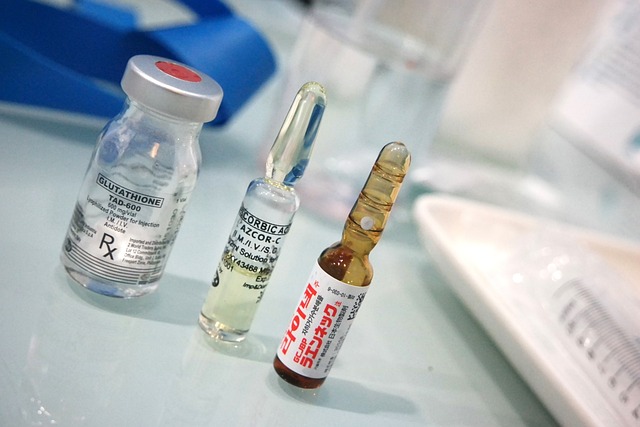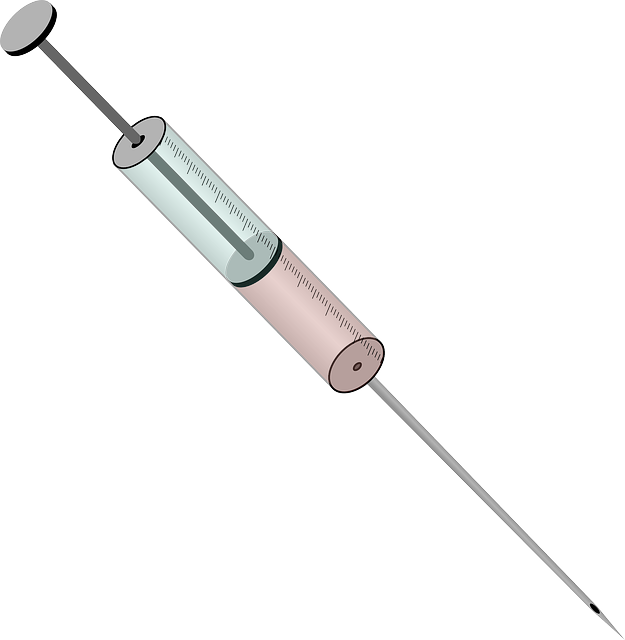TL;DR:
The semaglutide injectable form is a powerful tool for managing type 2 diabetes, offering both glycemic control and weight loss benefits through its GLP-1 hormone imitation. Regular follow-ups are crucial to optimize outcomes, monitor side effects, and adjust dosages. These check-ins enable healthcare providers to assess treatment response, detect potential issues early, and tailor care plans for personalized results. Key metrics like blood glucose levels, injection site reactions, and body weight changes are evaluated during these visits. Effective follow-ups involve strategic communication, detailed record-keeping, patient education on injection schedules and side effects, and flexible scheduling to improve adherence. Future advancements like wearable sensors, real-time data tracking, AI, and machine learning promise to further enhance the monitoring and optimization of semaglutide injectable form therapy.
In the realm of healthcare, regular follow-up assessments play a pivotal role in optimizing treatment outcomes, especially for injections. This article explores the significance of consistent monitoring for Semaglutide, an innovative injectable form of medication. We delve into how scheduled follow-ups enhance efficacy, ensure safety, and improve patient satisfaction. By examining key parameters, best practices, and patient engagement strategies, healthcare professionals can navigate the intricacies of post-injection care, ultimately refining the management of Semaglutide treatments.
Understanding Semaglutide and its Injectable Form

Semaglutide, a type 2 diabetes medication, has gained recognition for its dual role in weight management and glycemic control. Its injectable form offers a convenient and effective way to manage these conditions. This medication is administered via injection, allowing for precise dosing and targeted action. The semaglutide injectable form mimics the natural hormone GLP-1, which stimulates insulin production and inhibits glucagon release, thereby lowering blood sugar levels.
This novel approach not only aids in glucose regulation but also promotes weight loss by increasing feelings of fullness and reducing appetite. The injection is typically self-administered, making it a practical option for patients. Regular follow-ups are essential to monitor the efficacy of this treatment, assess any potential side effects, and adjust the dosage if needed, ensuring optimal patient outcomes with semaglutide’s injectable form.
The Importance of Regular Follow-ups in Injection Efficacy

Regular follow-ups are an essential component of optimizing the efficacy of semaglutide, a popular injectable form of medication. These check-ins allow healthcare professionals to monitor patient progress, assess treatment response, and make necessary adjustments to the therapy plan. By conducting routine follow-ups, doctors can gain valuable insights into how well the injection is working and identify any potential issues or side effects early on.
This proactive approach ensures that patients receive the most effective treatment tailored to their individual needs. For instance, in the case of semaglutide injections for diabetes management, regular follow-ups can help maintain optimal blood sugar levels, reducing the risk of long-term complications. Such timely interventions can significantly impact patient outcomes and quality of life.
Benefits of Timely Monitoring for Semaglutide Users

For individuals receiving Semaglutide, a glucagon-like peptide-1 (GLP-1) receptor agonist in its injectable form, timely monitoring of injection efficacy is paramount. This regular practice offers several advantages that significantly impact treatment outcomes and overall management of metabolic health. By keeping a close eye on the drug’s effectiveness, healthcare providers can swiftly identify any deviations from optimal blood sugar control, allowing for prompt adjustments to the patient’s treatment plan.
Such monitoring enables personalized care, as it helps in understanding individual responses to Semaglutide. This is particularly crucial given variations in absorption rates and metabolic profiles among users. Timely tracking facilitates early detection of potential issues like reduced drug efficacy or adverse reactions, empowering medical professionals to guide patients toward better glycemic control and improved quality of life.
Key Parameters to Evaluate During Follow-up Visits

During follow-up visits, several key parameters are crucial to evaluate the efficacy and safety of semaglutide in its injectable form. These include assessing the patient’s blood glucose levels, which provide insights into how well the treatment is controlling diabetes. Healthcare providers also monitor any adverse events or reactions at the injection site, such as redness, swelling, or itching, ensuring the patient’s comfort and identifying potential issues with the medication delivery.
Additionally, evaluating body weight changes is essential, as semaglutide is known for its potential weight management benefits. Analyzing these parameters helps in tailoring treatment plans, adjusting dosages if needed, and providing ongoing support to patients using this injectable form of semaglutide.
Best Practices for Conducting Effective Follow-ups

Conducting effective follow-ups for injection efficacy, such as those involving the semaglutide injectable form, requires a structured and patient-centric approach. Firstly, establish clear communication channels with patients to ensure they understand the importance of regular check-ins. Educate them about potential side effects and how to recognize them, empowering them to actively participate in their care. Regular, scheduled follow-ups via phone calls or video conferencing can be effective, offering a consistent point of contact for any concerns or questions.
Best practices also involve maintaining detailed records of each interaction, including patient reports, laboratory results, and adverse event documentation. This comprehensive data analysis aids in identifying trends, assessing treatment outcomes, and making informed adjustments to the injection regimen if needed. Additionally, incorporating feedback from patients can help improve follow-up strategies, ensuring they remain patient-friendly and efficient.
Patient Education and Engagement in the Process

Patient education plays a pivotal role in ensuring successful adherence to regular injection schedules, especially with semaglutide, a popular injectable form of diabetes management. Healthcare providers should take time to educate patients about the benefits of the treatment and address any concerns or misconceptions they may have. This involves explaining the mechanism of action of semaglutide, its role in glucose control, and the importance of consistent administration for optimal results. Engaging patients actively in this process fosters trust and empowers them to take ownership of their health.
By providing clear instructions on injection techniques, potential side effects, and when to seek medical advice, patients are better equipped to manage their treatment effectively. Regular follow-up sessions can be utilized to assess understanding, clarify doubts, and encourage open communication between patient and caregiver. This collaborative approach not only improves adherence but also enhances overall satisfaction with the therapy.
Overcoming Common Challenges in Post-Injection Follow-ups

Regular follow-up is essential for monitoring the efficacy and safety of injections, especially with complex formulations like semaglutide, an injectable medication. Common challenges in post-injection follow-ups include patient non-adherence to scheduling and difficulty reaching underserved populations.
To overcome these hurdles, healthcare providers can employ innovative strategies such as using digital tools for appointment reminders, offering flexible scheduling options, and establishing partnerships with community organizations to improve access. Additionally, training healthcare staff on effective communication techniques and cultural sensitivity can enhance patient engagement and adherence to follow-up care.
Future Trends and Innovations in Injection Efficacy Monitoring

The future of injection efficacy monitoring is poised for significant advancements, particularly with the growing popularity of innovative treatments like semaglutide in its injectable form. As technology continues to evolve, we can expect more sophisticated methods to assess and optimize patient outcomes. Wearable sensors and real-time data tracking are likely to become commonplace, providing healthcare professionals with continuous insights into medication adherence and treatment response. These technologies will enable timely interventions and personalized adjustments to therapy regimens.
Additionally, artificial intelligence (AI) and machine learning algorithms may play a pivotal role in forecasting injection efficacy trends and identifying patterns. By analyzing vast datasets, these tools can predict patient responses, aid in dose optimization, and even suggest alternative treatment paths. Such innovations promise to enhance the precision and efficiency of healthcare delivery, ultimately improving patient satisfaction and clinical outcomes.
